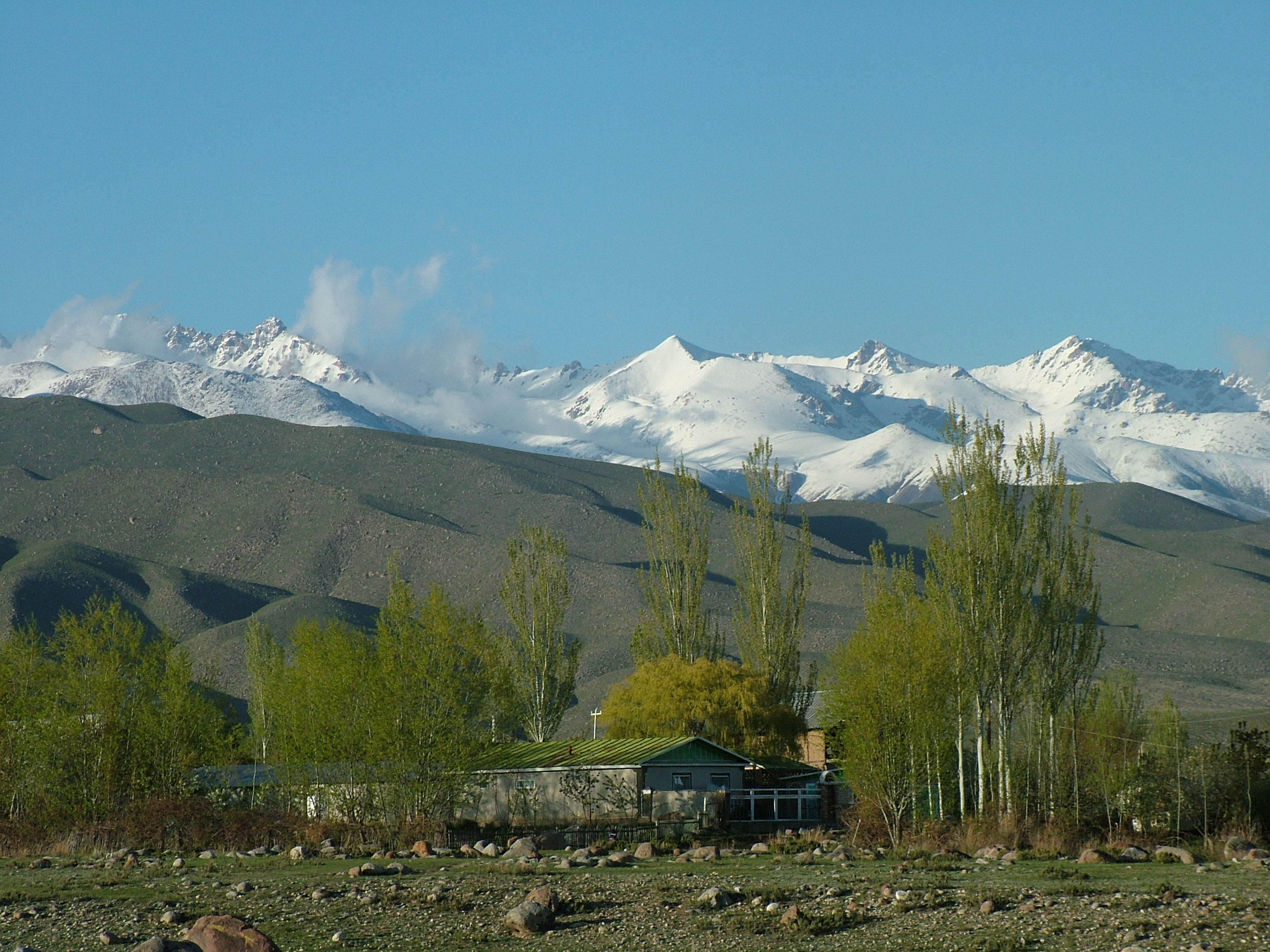Snow and glacier melt from the high mountain ranges is essential for water supply of the Central Asian countries. While glaciers can store water as glacier ice over decades, snow cover is a seasonal water storage that transfers winter precipitation into the summer months by releasing it as melt water. This is particularly important in seasonally dry regions since local water supply is then dependent on meltwater availability. By assessing the mass changes of glaciers and of the seasonal snow cover at the regional scale, GRACE may provide useful complementary information for assessing the water resources in Central Asia.
Central Asian mountain ridges north of Issyk Kul. Photo: Andreas Güntner, GFZ Potsdam.
In a study earlier this year (Farinotti et al., 2015), we could show that glaciers in Central Asia experience substantial losses in mass and area. Along the Tien Shan, Central Asia’s largest mountain range, glaciers have lost 27% of their mass with an average rate of 5.4 Gt/year and 18% of their area during the last 50 years. GRACE data for the last decade were found to be consistent with mass change rates based on independent methods, namely satellite laser altimetry and glaciological modelling. The results highlight the threat of dwindling water resources at the long term in this region.
In recent EGSIEM activities, we now explore the value of GRACE data for seasonal forecasting of river flow in Central Asia. The hypothesis is that GRACE can reveal years with above and below average snow storage, accumulating during the winter months in the Central Asian mountains. Having this information from GRACE at hand by the end of the winter, it might be used as an indicator for forecasting the volumes of river flow of the upcoming summer season. This, in turn, can be valuable information for water resources planning and management in the regional river basins. First results for the Naryn river basin, rising in the Tien Shan mountains of Kyrgystan, indicate that water storage anomalies in the month of April (end of winter) from GRACE are well correlated with river flow in the next spring and summer period (May to September). Together with other potential predictors such as satellite-based snow cover, air temperature, or previous river discharge, we will now test the added value of the GRACE data in seasonal river flow forecast models for the region.
Literature:
Daniel Farinotti, Laurent Longuevergne, Geir Moholdt, Doris Duethmann, Thomas Mölg, Tobias Bolch, Sergiy Vorogushyn, and Andreas Güntner (2015): Substantial glacier mass loss in the Tien Shan over the past 50 years. Nature Geoscience, DOI: 10.1038/ngeo2513.

